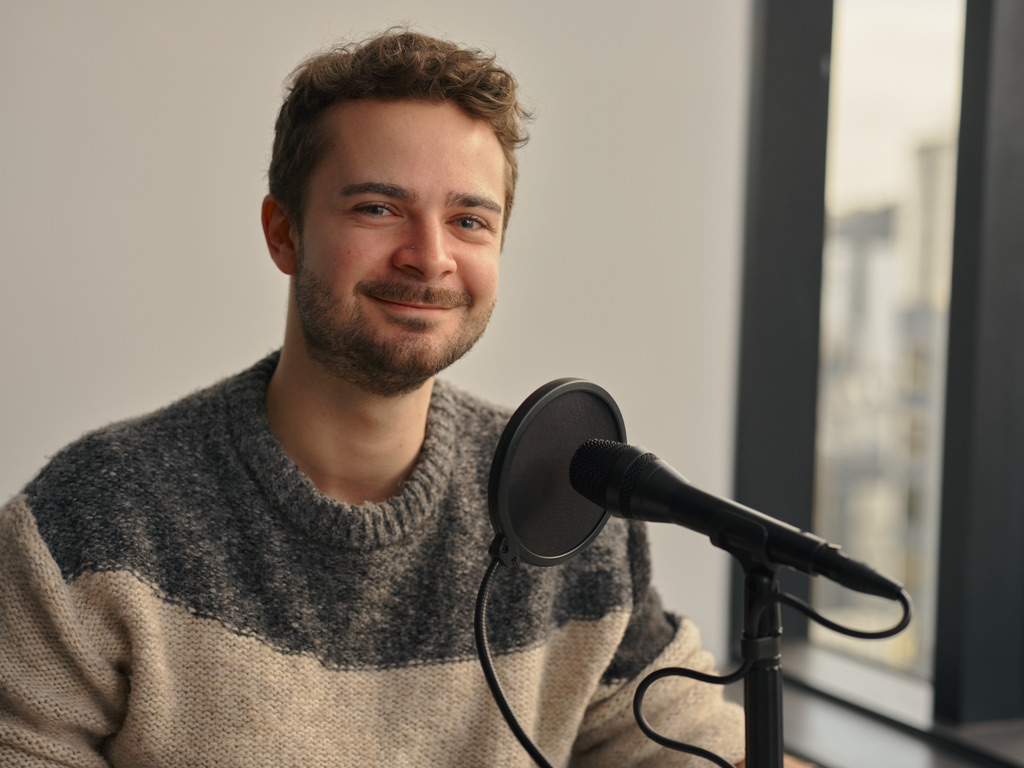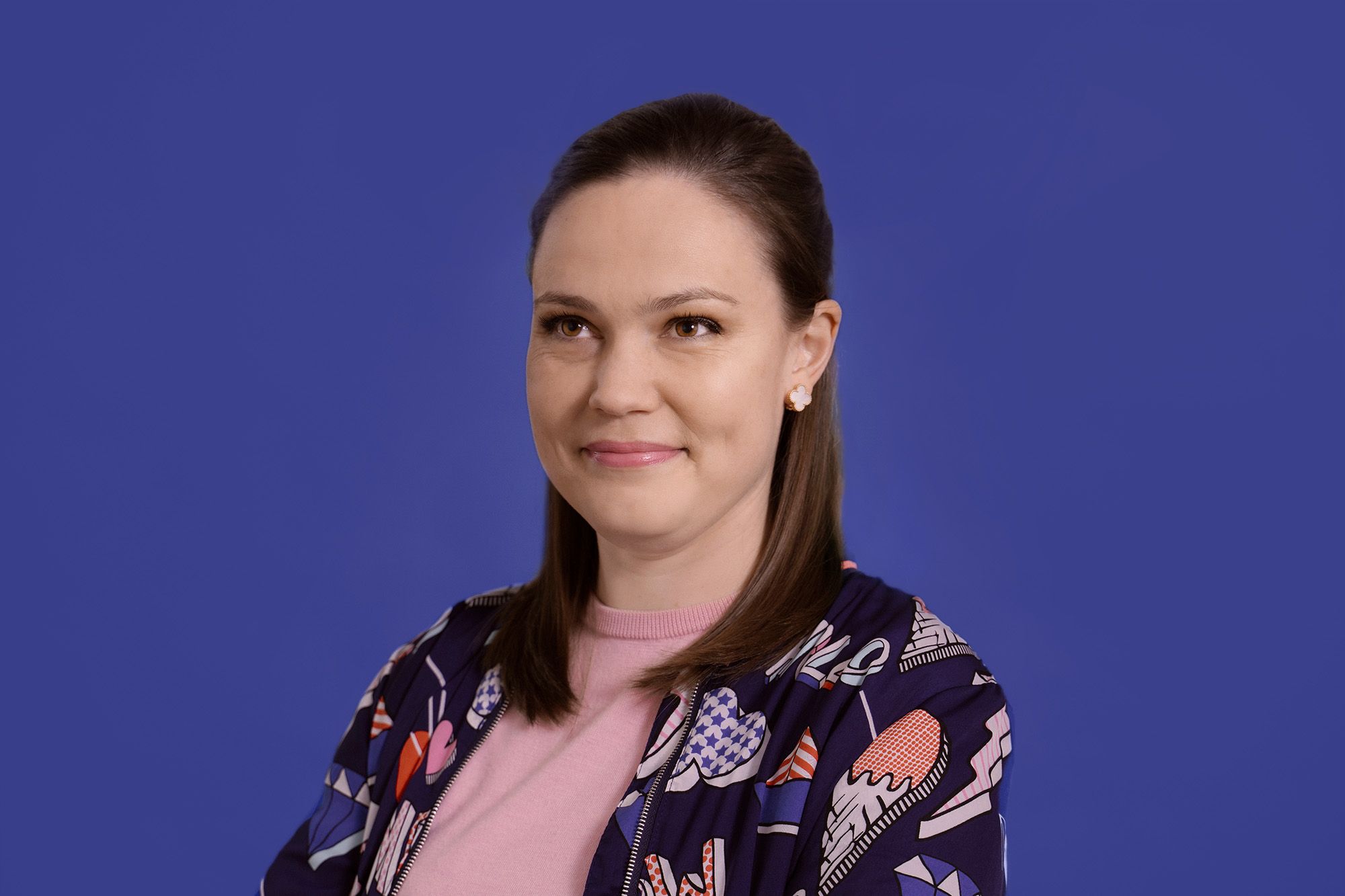
Shelley Waddams is a trained actor originally from the UK and moved to Aotearoa when she was 15. She is a CODA (Child of a Deaf Adult), currently works as a writer at Shortland Street and is a pet parent to two adorable dogs. Georgia Hoskins-Smith is a producer and trained actor, and a paw-rent to her dog, Ringo.
Shelley and Georgia co-created Hand in Hand, a short film focusing on the story of two Deaf girls navigating mainstream education and their right to use NZSL.
Kia ora! Can you tell us a little about the film? Where did the inspiration to create it come from?
Shelley: My mum is Deaf so the film is based on her experience. The character Annette is my mum – didn’t even change the name! I grew up with Mum telling me all these stories and what it was like for her growing up as a Deaf kid in a hearing school and family. I always found those stories interesting but it wasn’t until I finished drama school that I thought it would be really awesome to see some of those stories on screen. I also thought it would also be really cool to raise awareness of what things were like for Deaf children back then. And for some, it’s still like that. Adults as well. Because lots of things have changed and some things haven’t. Above all, having Deaf representation on screen in Aotearoa was important too because that’s not something we see enough of unfortunately.
Georgia: I was very fortunate to be part of the process. Shelley and I worked on a theatre show entirely in NZSL a few years back. This short film was a completely separate project from that but at the same time, felt like an extension of it. Like Shelley said, the aim to spread awareness was a huge part of why I was involved. Giving something back to the Deaf community was another thing as well. Something that Deaf people can watch and enjoy in a way that allows Deaf people to own it in a way, since it is an experience shared by many.
What was it like casting the actors and how did they learn NZSL if they didn’t know it before filming?
Georgia: It was a hard process! Very daunting for us both. Without the two main actors, we wouldn’t have been able to make the film. The process began by putting a call out on Facebook and other ways of getting the message out there to find the actors. We received 5 submissions and did Zoom auditions with all of them. That was a really interesting process for Shelley and I. We were very fortunate to have found our two amazing actors Sadie and Natalia through the auditions. Both of them live outside of Auckland in Christchurch and New Plymouth. They both have cochlear implants so we were able to communicate by talking throughout the Zoom auditions. We are so grateful that they were part of the film as they were both perfect!
Shelley and I remember one moment after we had our first audition with Natalia once it was finished as during the Zoom, Shelley and I were in separate rooms. After it ended, we both came together and ended up screaming and jumping up and down because there was so much pressure leading up to the auditions as we needed to find the right people to fit the roles. But once we had the auditions with Sadie and Natalia, we knew.
Shelley: From the start, I knew I wanted to have Deaf actors playing Deaf characters. It wasn’t something that was even an option for me. If we had hearing actors playing Deaf characters, I feel like that would’ve defeated one of the entire purposes of the film which was to have Deaf representation. I personally don’t feel kindly about hearing actors playing Deaf characters! As do most of the Deaf community do. However, I knew that Deaf actors are very rare in Aotearoa, let alone Deaf child actors. I also knew that whoever we cast, we would be dealing with kids who most likely had no acting experience. So I feel like we really lucked out finding Sadie and Natalia. Their mums were also amazing as when dealing with child actors, their parents need to be into the project just as much as the kids are.
Natalia actually comes from a Deaf family as her father is Deaf and her mother is an NZSL teacher, so NZSL is her first language. Sadie comes from a hearing family and did have a basic understanding of NZSL, so Natalia and some of us taught her more NZSL which she picked up really quickly. We were just so lucky with our two main actors.
What was the experience of auditioning Deaf children (who had no prior acting experience) through Zoom?
Georgia: This was our first time doing any form of auditions so one of the first things we really focused on was playing games. Talking to them and their families was huge as we wanted to get to know them more and give everyone opportunities to warm up to each other.
Shelley: It’s hard to describe because the girls were so young, getting to know them was just as important as auditioning the scenes to know if they were going to be a good fit. Due to their age, we wanted them to be similar to their characters so there wasn’t much difference in how they were acting. We didn’t want to make it super hard in that they had to be wildly different from their own selves. Once we did the script it was perfect because the girls had no real idea about acting, they just did it without overthinking it too much. Which was exactly what we needed. I really have to say getting to know them by chatting and through games over Zoom as we auditioned then progressed onto rehearsals was a hugely important part of it. We ended up stepping back a little during the Zooms as we wanted them to build up a relationship with each other, and we really wanted that to happen as we felt it would translate very well on screen if they had a strong friendship with each other offscreen.
Georgia: They became really close during filming. Shelley and I would laugh as we’d sometimes say to each other “What have we created?”. It was so good to see that they became strong friends through working on this film.
What were your goals for the film and what did you hope it would achieve? How did you want the Deaf community to receive the film?
Shelley: I definitely felt a lot of pressure to say the least! I wanted the film to authentically represent Deaf people in a way that feels truthful because as a CODA myself, I’m a part of the Deaf community but I’m not Deaf myself. I can’t speak for Deaf people so I tried to give space for representation of an experience that is relevant for so many people, particularly the older members of the Deaf community as best as I could. To make it personal, I was really hoping my Mum would watch it and feel seen. I originally went into the process with the aim of making it for my Mum but over time, I realised it was a bit bigger than that so I’m really glad the film has had the reception it’s gotten.
What’s the reception been like so far?
Georgia: We have been selected for six film festivals. One is in Aotearoa with the rest being international. For both Shelley and I, this is our first ever film of any kind so having international recognition is really exciting. It’s so great to see a film seen on an international level that features and represents marginalised communities being recognised and nominated for awards.
Shelley: It feels so cool to know that some people around the world are watching our little film and connecting with it. We’ve won Best International Short Film at the Perth Women’s Film Festival and Best Overall Short Film at the London International Short Film Festival. That one was really exciting as it’s one of the top awards so we’re super stoked with that. To know that the film is being seen by so many people overseas is still crazy to us!
Why was it so important for you both to bring authentic Deaf representation to the screen?
Shelley: Sometimes when marginalised communities are represented on screen, it can be quite two-dimensional. I felt that it’s really important to show that there’s more to marginalised communities, including the Deaf community, than that two-dimensional depiction. Deaf people like anyone else in the world, lead lives and experience feelings. It’s important to represent that: not just that they are Deaf and – depending on the person – use sign language. We also wanted to show lots of love and hope in struggles, as with films, struggles are often the focus which is super important to show; but when I think about Hand in Hand, it’s really about friendship and hope. I did not want it to be a film that stirred up feelings of a pity party.
How are you both feeling about the success of the film so far?
Shelley: It was intense while we were making the film but things did come to a standstill while the film was held by the funders for three months before the release. When it finally came out, it was so unexpected and overwhelming – in a good way! There were many tears shed over the positive reactions the film received, it went better than either of us could’ve hoped for. We really weren’t expecting it to connect with so many people.
Georgia: One of the best things was reading the comments after it was posted on Facebook. It is unfortunate in a way that so many people related to the experiences depicted in the film; but also people were so excited to see their story on screen. Knowing that it was reaching the people we wanted it to reach was huge! Some of the comments were in languages like Portuguese which is really cool to see. Most of all, the fact that we’re still talking about it today, one year later, is one of the most exciting things to me.
Looking to the future, what are your goals and aspirations for filmmaking?
Shelley: We both have so many projects on the go individually, but we’re also filming another short film together. It’s very different from Hand in Hand and a drama/murder mystery. We currently don’t have anything like Hand in Hand in the pipeline. We have had so many requests for Hand in Hand II though! I definitely do feel that throughout my career I will be doing things that shine a light on the Deaf community and aim to create ways for authentic representation on screen.
Watch the award-winning short film Hand in Hand with captions and audio description here.





